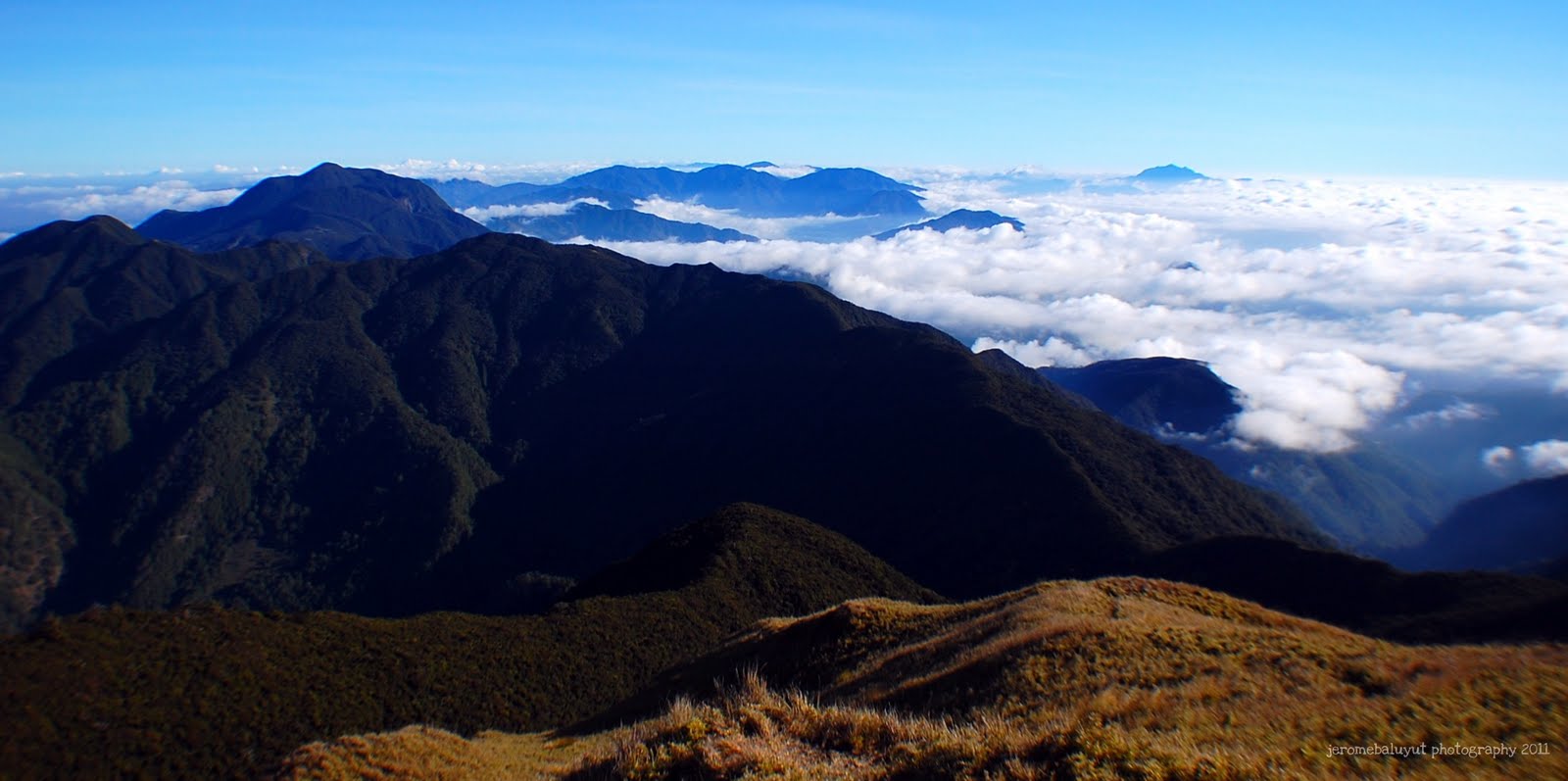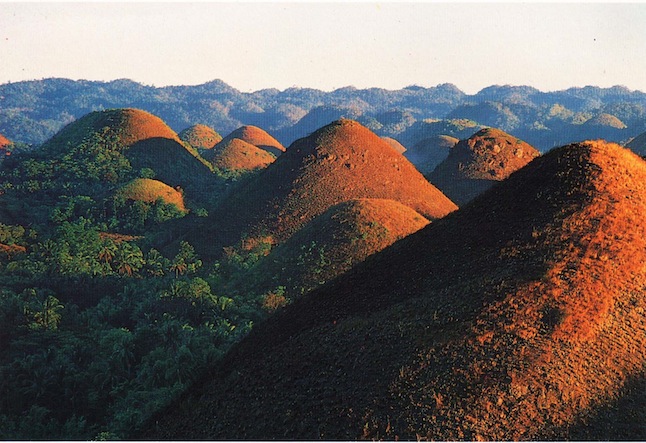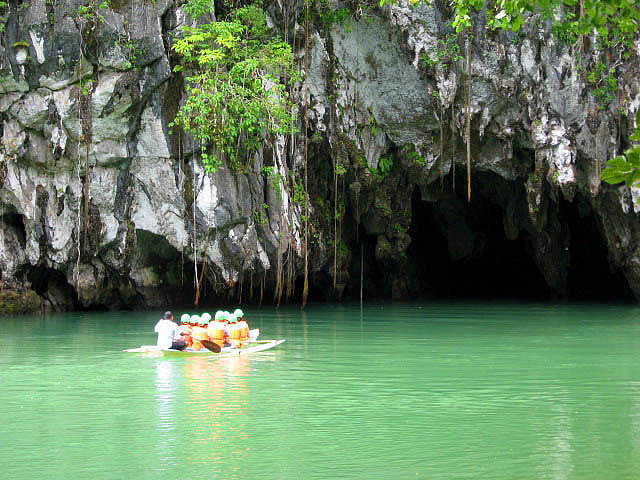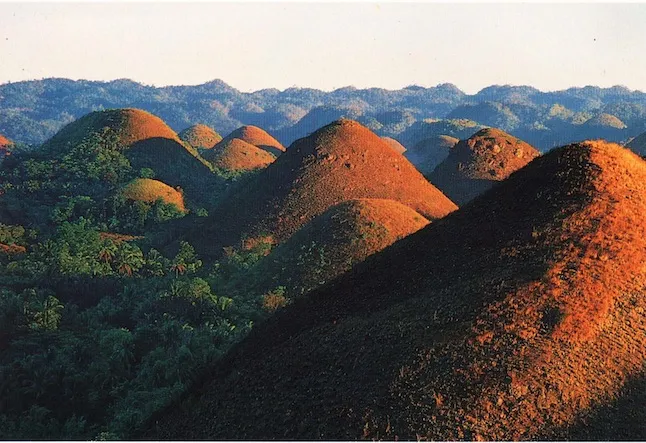Some weeks ago, I was invited by the TV show “Ang Pinaka” to talk about the Top 10 Natural Wonders in the Philippines. Below is a short article about it. Unfortunately, my appearance in this article has been greatly reduced to a few short (and corny) lines. I assure you, though, that I gave a much more substantial interview on the show. 🙂 (And no, I’m not being defensive haha) They also spelled my name incorrectly. It’s PAULINE, not POLIN. Oh well, that’s okay. All in the name of promoting my beautiful Filipinas. Another disclaimer: I know there are so many other natural wonders around the country that we were not able to discuss here, given the limited airtime. But I’m sure a Part 2 is not far from the producer’s mind.
So here’s the article, re-posted from GMA News. Photos are mine unless otherwise stated. Click on the photos to go the the source. -Pauline a.k.a. POLIN 😉
*****
With summer vacation just around the corner, many Filipinos are excited to plan their vacations. While seeing the world may be fun, it can also be quite expensive.
Fortunately, there are several places that are more than worth seeing in the Philippines. “Ang Pinaka,” a GMA News TV show, lists ten of the most awe-inspiring sites and attractions in its feature “Amazing Natural Wonders ng Pilipinas.”
10. Mount Pulag
This mountain is the third highest in the Philippines and Luzon’s highest peak at 2,922 meters above sea level. It is located in Mt. Pulag National Park, which straddles the boundaries of Benguet, Ifugao and Nueva Vizcaya.
The park itself is famous for its unique flora and fauna. The Philippine Brown Deer, Northern Luzon Giant Cloud Rat and the Luzon Pygmy Fruit Bat are some of the wildlife that can be found in the park.

But climbing the mountain is an unbeatable experience.
Passing through forests to get to the summit, campers can stay overnight to wake up on top of the world. With its rainforests and grasslands, the mountain is often awash in sunlight and fog. “It’s just like heaven,” says Rovilson Fernandez, host of “Ang Pinaka.”
Permits are necessary to climb the park, and it’s best to prepare for the challenging climb.
9. Agusan Marsh
One of the most ecologically significant wetland ecosystems in the Philippines, the Agusan Marsh is an area for conservation. It is a very popular destination for bird-watchers from all over the world.
Although it was recently in the news as crocodile Lolong’s habitat, it is not yet that popular as a tourist attraction.
”Ang Pinaka” guest panelist Ivan notes that the marsh is difficult to get to, and mass tourism in the area is really not a good idea. But Agusan Marsh is a popular destination for bird watchers.
Another guest panelist on the show, Robert, shares that he was part of the Department of Tourism’s effort to create a book on birding sites all over the Philippines. “Dito mo matatagpuan ang iba’t ibang klase ng mga ibon, lalo na ang mga ibon na hindi mo matatagpuan sa ibang lugar sa buong mundo.”
8. Chocolate Hills
Sometimes green, sometimes brown, Bohol’s famous chocolate hills are so perfectly shaped that it’s hard to believe they aren’t man-made. In fact, a great deal of effort is made to keep people away from the hills.
 You have to climb 214 steps just to see the hills, which are spread over three towns.
You have to climb 214 steps just to see the hills, which are spread over three towns.
“Do not leave your mark when you visit a natural attraction. You should keep (it) the way you saw it, the way you visit it,” says Ivan.
These fascinating landforms are composed of limestone and other marine organisms, like corals. The Chocolate Hills are a must-see in Bohol, which has many other attractions.
7. Donsol
Since a group of divers first made contact with butanding in 1998, these gentle giants became a worldwide attraction, and Donsol was known as the Whale Shark Capital of the World.
“Ang alam ko talaga, it’s one of the few places sa buong mundo na magagawa mo seeing the whale sharks and swimming with the whale sharks. That’s something you can really really be proud of,” says Robert.

He notes that the local government ensures the tourists observe proper guidelines. “For example you are not supposed to touch or go in front of the whale shark so siyempre, bilang turista, kailangan we have to respect that, ‘di ba?”
Swimming with the butanding is a truly awesome experience. It’s so amazing, it’s almost surreal.
6. Coron, Palawan
The main gateway to the Calaminan Group in the northern section of Palawan, Coron is a small island with an abundance of natural beauty.
Apart from spectacular limestone formations, immaculate beaches, hot springs and the Cayangan Lake, there is a fantastic dive site where you can see the Japanese naval vessels sunk by American fighter planes during World War II.

“Hindi maraming lugar sa mundo na maraming Japanese wrecks. Coron is one, so maraming dumarayo just to dive there,” says Robert.
He also shares that it’s as if time stands still on Culion Island, which was once a leper colony.
“Nandoon ‘yung isla, nandoon ‘yung hospital. Tapos ang nakakatuwa doon, dahil nga takot ang mga tao dun sa leprosy disease, when you get to the place it’s like time stood still. It’s not like Boracay na siyempre dumaragsa ang visitors and development is crazy. At Culion there’s actually hardly any development since the 50s yata, so it’s very nice and peaceful. I really like it,” he says.
5. Boracay
Famous for its pristine white powdery sand, Boracay was recently named the second best island in Asia, second only to Indonesia’s Bali and the 4th best worldwide. Despite being crowded at times, it is still quite beautiful.
“Maski na ang gulo, meron ka namang places na you can find a peaceful spot for yourself. The sand is really something else,” says Robert.
Boracay has long been a favorite tourist destination, even during the colder months.
Apart from swimming, the paradise island offers a variety of activities, and visitors have a wide array of options when it comes to resorts and dining.
4. Mayon Volcano
Known for its perfect cone, Mayon Volcano is at the northern boundary of Legazpi City in the Bicol region. But the volcano is as scary as it is breathtaking, and it is best admired from a distance.
Polin, another guest panelist on “Ang Pinaka,” says she felt blessed to have seen Mayon in all her glory. “Para siyang pangitain. Nandiyan lang siya sa mga ulap, perfect tapos pagka ni-reveal niya ‘yung sarili niya, it’s really something worth seeing,” she says.
Ivan notes that it is very important for the local governments when building infrastructure to promote a natural attraction. “The attraction itself must be preserved. Hindi dapat siya ginagalaw. If ever there are movements, hindi dapat nakakasira sa ganda niya,” he says.
“People should know how to keep away from volcanoes especially Mt. Mayon. Nakita natin kung ano ‘yung nangyari. Recently nag-spill siya ng lava tapos nagbaha, bumagyo, tapos ang daming na-wipe out na communities. You admire from a distance. Maganda siya pero huwag nating kalimutan na isa siyang bulkan,” says Polin.
3. Taal Volcano
Another frequently-visited volcano is Taal Volcano. Arguably the smallest active volcano in the world, it is submerged in Taal Lake, the third largest lake in the Philippines next to Laguna de Bay and Lake Lanao.
It was said to be originally a huge volcano, towering 18,000 feet into the sky.
Polin explains that the lake is actually a crater. “It’s a wonder in itself. Kamangha-mangha siya,” she says.
Listed as one of the top 10 beautiful lakes in the world, it is nominated for the UNESCO world heritage list.
“It’s a national geological monument. Dapat nga walang mga structures on the island itself, no?” says Ivan, recalling that there had been plans to put up a Korean spa and a signage on the volcano.
Visitors often see the lake from Tagaytay Ridge, where you can enjoy the fresh air and the relaxing view.
Ivan feels that the government should focus more on preserving Taal. “Hindi dapat itapon ang natural attractions natin basta basta. Kasi ‘yung attitude kasi natin ay ‘puwede na ito’; hindi dapat ‘yung kailangan nating palitan. I think the local government should consider hiring the best architects to come up with a beautiful place,” he says.
2. Palawan Underground River
Recently named one of the New Seven Wonders of Nature, the Puerto Princesa Underground River is one of the country’s UNESCO World Heritage Sites.

“Ang ganda ganda ng lugar! Tapos pagpasok mo, ayon na, parang ikaw lang at ang underground river at lahat ng formations, rock formations na nasa paligid mo,” says Polin.
Robert likens his experience of the place to finding the Statue of Liberty underground. “I was really really impressed so maganda talaga na makita ng mga Pilipino iyon,” he says.
“Dito makikita mo rin ‘yung kamay ng nature, kamay ng kalikasan na umaandar, gumagalaw kasi ang kamay ng kalikasan ang humulma sa mga bato,” says Polin, noting that the stalactites and stalagmites are truly amazing.
Ivan says Puerto Princesa’s local government is really making an effort to preserve the park and the protected area. He adds that there is a need to consider the arrival of tourists to ensure that the natural wonder does not get destroyed.
1. Tubbataha Reef
Tubbataha Reef is another UNESCO World Heritage Site in the Philippines.
Rovilson explains that the reef is named from two words, “Tubba” and “Taha.” Combined, the name means a long reef exposed at low tide.
The reef is a marine sanctuary, and is protected as Tubbataha Reef National Marine Park.

“We all know that the Philippines is considered as the center of marine biodiversity in the world and Tubbataha Reef is a UNESCO world heritage site and one of the best representative for that particular state na tayo ‘yung isang sentro ng marine biodiversity sa mundo,” he says.
“This is a very prestigious honor that is given to us,” adds Polin.
Because the Philippines is in a coral triangle, this puts the country at the center of marine biodiversity in the world. “So ang yaman yaman at talagang pristine ‘yung ating marine life lalo na dito sa Tubbataha Reef,” she says.
Ivan says that it is something that we really have to preserve and promote. “You know it will really break into a buzz if we promote our coral reefs because they are among the most beautiful in the world. So that’s why Tubbataha is my number one,” he says.
Robert adds that although it is difficult to get to, this is good in terms of preserving the reef. “Ibig sabihin ang hirap puntahan, kailangan ng pera, konti lang ang nakakapunta. Ang ibig sabihin noon, hindi siya dinaragsa at hindi siya masisira kaagad,” he says. –KG, GMA News
“Ang Pinaka” airs on Sundays, 6:30PM over GMANewsTV.



Thanks, Polin, he he he…While my resources are almost always depleted, I like to read things like this because it keeps my travel dreams going, plus it gives me ideas as to where, when circumstances permit, I might be able to bring Bentot. 🙂
hahaha. Thanks, Isa! I do hope you’ll be able to take Ben to any of these places soon. Of course, Baler should also be on this list, too.:)
Well, for me anyway, Baler will always be one of the best destinations. 🙂 Among the places Ben wants to visit in this list are the Underground River, Donsol, and Chocolate Hills. One of these days (fingers crossed).
Isa, Ben HAS TO SEE the butandings! He will love them!
Great list! Im counting years to finish a bucket of list to travel.. And yay! We share the same name! I hate people mispronouncing our names haha! 🙂
Hey there, Pauline! Naku, you’re still so young. You still have plenty of time! And yes, don’t you just hate it when people mispell or mispronounce our name? haha
I salute you and this article! great job!! 🙂
Thank you, Carlo! Good luck on your travels as well.:)
Great info. Philippines has some wonderful waterfalls too. My favorite are the Casaroro falls near, Valencia, Dumaguete.
You have a great little trek to get there, but it’s well worth the adventure.
http://flic.kr/p/9ydniE
Hey Ronnie,
Thanks for this! I haven’t been to Dumaguete yet but will check out Casaroro when I do go there.
Happy travels!
Pauline
Do you of anyone in the Philippines who are planning to or will be doing the Camino de Santiago next year? I am planning to do it next year and have scheduled the next couple of months to physicaly train for it. In fact, I may go to the Philippines to attend the Basic Mountainering course and maybe do some hiking and mountain climbing there.
Hi Gene!
I’m planning my Camino next year! I haven’t trained for it but I’m starting to plan it already. What month are you going? I think the mountaineering course would help a lot!
Pauline
its cool
Good day Pauline! Wow i never thought I would find this blog. What an amazing adventure you have in your trip! Someday I would be doing things like you do. Traveling anywhere in the Philippines and hopefully around the world. Thank you for the additional information. God Bless You!
Maraming salamat!